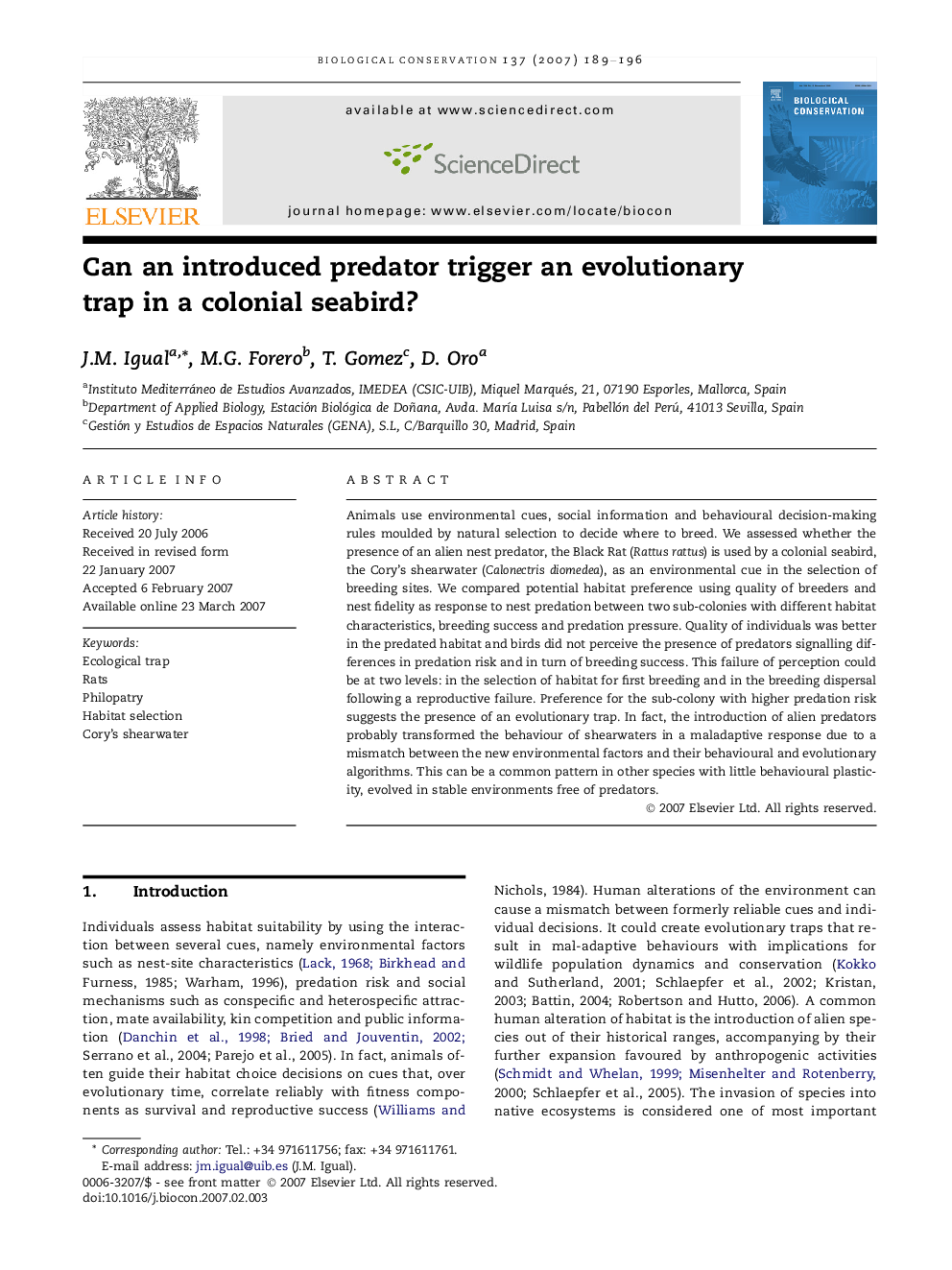| Article ID | Journal | Published Year | Pages | File Type |
|---|---|---|---|---|
| 4387351 | Biological Conservation | 2007 | 8 Pages |
Animals use environmental cues, social information and behavioural decision-making rules moulded by natural selection to decide where to breed. We assessed whether the presence of an alien nest predator, the Black Rat (Rattus rattus) is used by a colonial seabird, the Cory’s shearwater (Calonectris diomedea), as an environmental cue in the selection of breeding sites. We compared potential habitat preference using quality of breeders and nest fidelity as response to nest predation between two sub-colonies with different habitat characteristics, breeding success and predation pressure. Quality of individuals was better in the predated habitat and birds did not perceive the presence of predators signalling differences in predation risk and in turn of breeding success. This failure of perception could be at two levels: in the selection of habitat for first breeding and in the breeding dispersal following a reproductive failure. Preference for the sub-colony with higher predation risk suggests the presence of an evolutionary trap. In fact, the introduction of alien predators probably transformed the behaviour of shearwaters in a maladaptive response due to a mismatch between the new environmental factors and their behavioural and evolutionary algorithms. This can be a common pattern in other species with little behavioural plasticity, evolved in stable environments free of predators.
